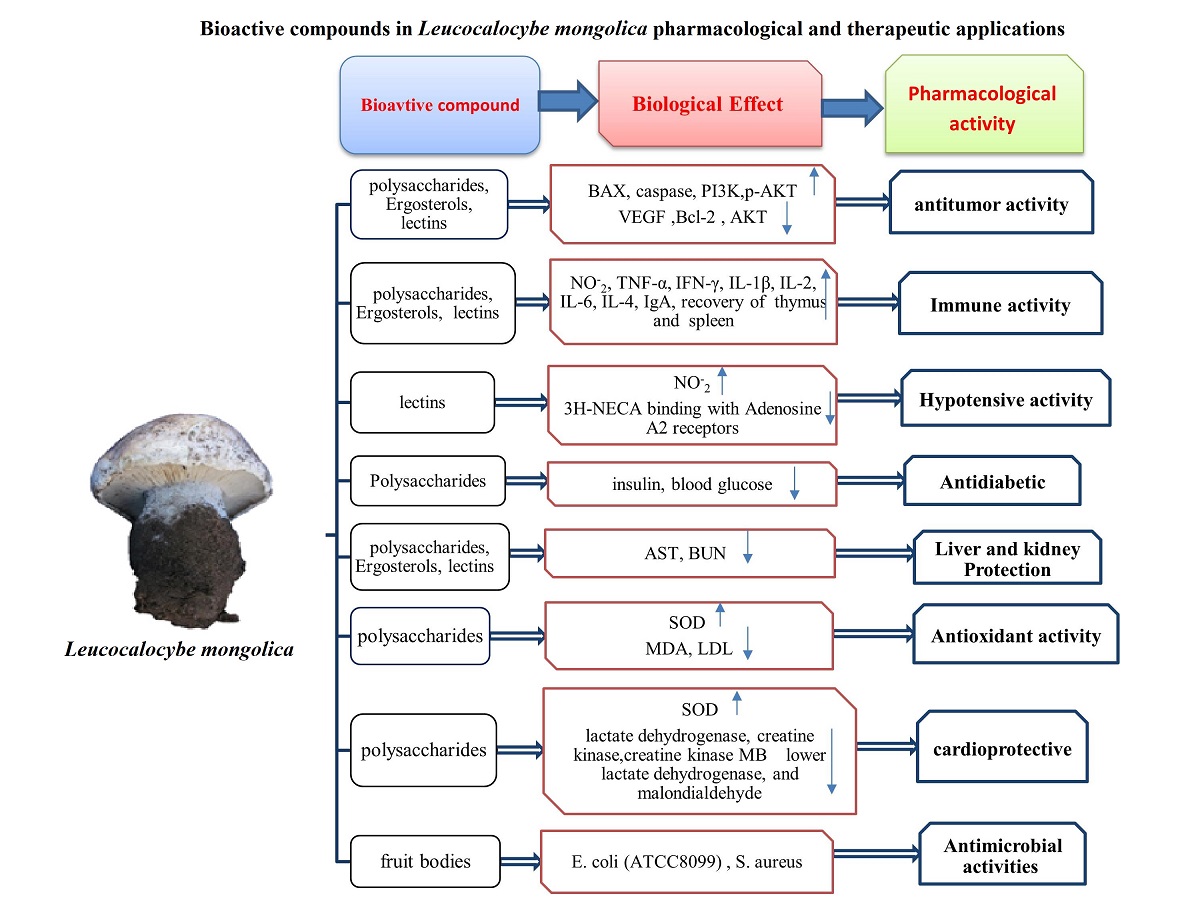Medicinal mushrooms have got much attention from biologists in the last decades. Leucocalocybe mongolica Imai remains one of the famous clinical and edible mushrooms used in traditional Chinese medicine and Mongolian medicine to treat various diseases. It also commonly consumes in Chinese and Mongolian daily dishes. Numerous biochemical components exist in L. mongolica, especially in the fruiting bodies include; polysaccharides, sterol, lectins, laccase, amino acids, terpenes, volatile compounds, and so on. These biomedical components possess a lot of medicinal properties and provide diverse therapeutical effects for human health, such as anti-tumor activity, antiproliferative activity, anti-diabetes properties, hypotensive effect, hepatoprotective effect, antioxidant activity, cardioprotective effect, and so on. However, this review's main objectives are to illustrate some basics about the bioactive components in L. mongolica and its pharmacological effects on the human body. In addition to giving forward some suggestions for future research on this medicinal mushroom.

